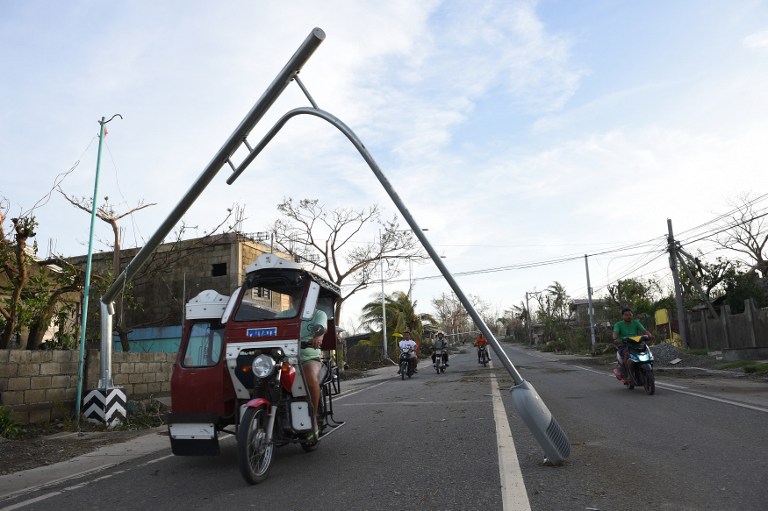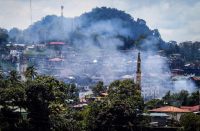
Super typhoon Haima, one of the most powerful typhoons to ever hit the Philippines, killed at least eight people on October 20 as ferocious gales and landslides destroyed tens of thousands of homes. / AFP PHOTO / TED ALJIBE
MANILA, Nov. 4 — Interior and Local Government Secretary Ismael ‘Mike’ D. Sueno prompts local government units (LGUs) not to let their guards down after the onslaught of Typhoon Karen and Supertyphoon Lawin.
Sueno, who is the concurrent Vice-Chair of the National Disaster Risk Reduction and Management Council (NDRRMC), enjoins all LGUs to carry out proactive measures and implement temporary closure of roads, bridges, and other critical thoroughfares not limited to rivers, streams and other bodies of water that are being used for public transport upon alert of impending disasters.
“Complacence is risk-taking while prevention is security. Preparedness starts with LGUs as social protectors of communities and families,” said Sueno. In a directive, he urged all provincial governors including the Autonomous Region in Muslim Mindanao (ARMM) regional governor, city and municipal mayors, punong barangays, and DILG regional offices to identify national and local roads and bridges that will likely be affected by an impending disaster and identify alternate routes for all temporary closures accordingly.
The Secretary further enjoined LGUs to issue an advisory to all concerned, particularly the Department of Transportation (DOTr) and Land Transportation Franchising and Regulatory Board (LTFRB), prior to the implementation of the temporary closure of affected areas. He also prodded LGUs to pass a local ordinance regarding it and develop a Standard Operating Procedure as basis for future use.
“Flooding and rain-induced landslides on critical thoroughfares can hamper economic activities, cause major damages to infrastructure and facilities as well as accidents that may result to loss of lives,” said Sueno. LGUs, he said, must closely coordinate with the Department of Public Works and Highways (DPWH) for national roads and bridges, Department of Environment and Natural Resources (DENR)-Mines and Geosciences Bureau (MGB) for flood and rain-induced landslide prone areas, and Department of Science and Technology (DOST)-Philippine Atmospheric Geophysical and Astronomical Services Administration (PAGASA) for rainfall projections for the identification of areas that require temporary road closures. (DILG)







